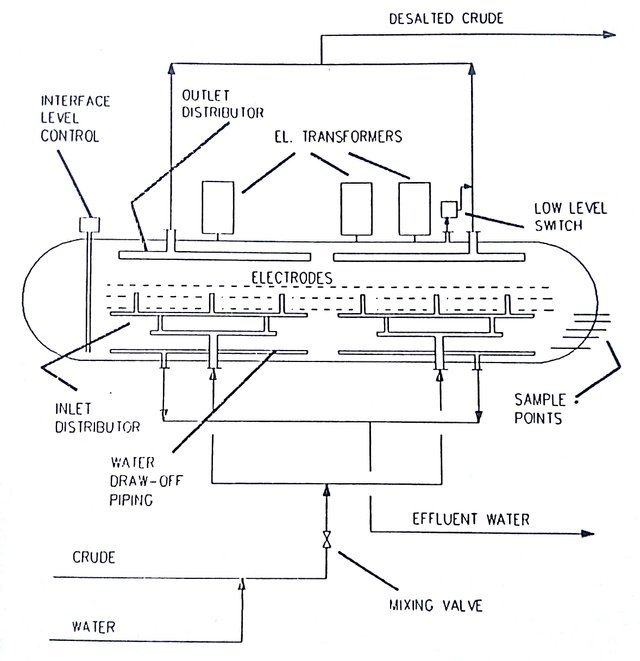CORROSION MONITORING AND CONTROL IN THE TOPPING UNIT OF WARRI REFINING AND PETROCHEMICAL COMPANY, DELTA STATE, NIGERIA
This research work focuses on corrosion control and monitoring in the topping unit of Warri Refining and Petrochemical Company (WRPC), Ekpan, Delta State, Nigeria. Different types of corrosions such as erosion corrosion, caustic corrosion, embrittlement, and acid corrosion could occur in the topping unit of WRPC. Mitigation strategies such as chemical dosing and coupon installation were done to prevent and monitor corrosion respectively in the topping unit of WRPC. Chemicals such as neutralizers, water, embreak, petromean, and philmplus are used in corrosion control. Corrosion coupons were installed at several units to monitor corrosion rate. Corrosion rate of 5.26 mdd, 6.5 mdd, 7.5 mdd, 1.3 mpy, and 4.2 mpy were observed at different locations which when compared with critical rate of 20 mdd and 8 mpy standard as used in WRPC, were found to be within acceptable limit and indicates that adequate measures were applied to reduce corrosion rate in terms of material selection and control. This research work also outlines the basic principles of corrosion prevention, monitoring and inspection and attempts to suggest ways in which these measures may be adopted in the context of oil Topping Unit of any Refinery.
MATERIAL SELECTION FOR CONSTRUCTION OF FACILITY
Most of the materials used in the crude distillation column are made up of carbon steel. Carbon steel – steels that do not have alloying elements intentionally added. Carbon steel is used for at least 80% of all components in Warri Refinery because it is inexpensive, readily available, and easily fabricated. Every effort is made to use carbon steel, even if process changes are required to obtain satisfactory service from carbon steel. For example, process temperatures can be decreased, hydrocarbon streams dried up, or additives injected in order to reduce potential corrosion problems with carbon steel in FCC and CDU, separator drums, heat exchangers shells, storage tanks, most piping and all structures are generally fabricated from carbon steel.
For monitoring purpose, WRPC utilizes corrosion coupons.

source, wikipedia
DESALTING
Crude oil entrains water, salts and various solids. Salts are mainly chlorides of sodium, magnesium and calcium dissolved in residual water. Solids such as iron oxides, sand and crystalline salts are suspended in the crude and mostly carried by the water. If the contaminants are not removed, they can seriously damage the process equipment and cause inefficient operation. In fact salts can be converted into hydrochloric acid which can corrode equipment; salts can act as catalysts for coke formation; salts and solid deposits can cause plugging and fouling. Since salts and other contaminants are soluble in water and not in oil, water is injected in the crude to dissolve them. The water quantity should be enough to dissolve the highest possible quantity of salts and form a low concentration solution to avoid corrosion. Water must be then separated from oil. Separation is achieved in a large vessel (desalter) where due to low velocity and long residence time water can settle in the bottom.

source: WRPC
CLASSIFICATION OF CORROSION RATES IN (MPY)
Description Carbon Steel
Excellent 0 – 1
Mild or Very Good 1 – 3
Good 3 – 5
Moderate to Fair 5 – 8
Poor 8 – 10
Very Poor to Severe > 10
The normal allowable corrosion rate is up to 5.00 Mils per Year.